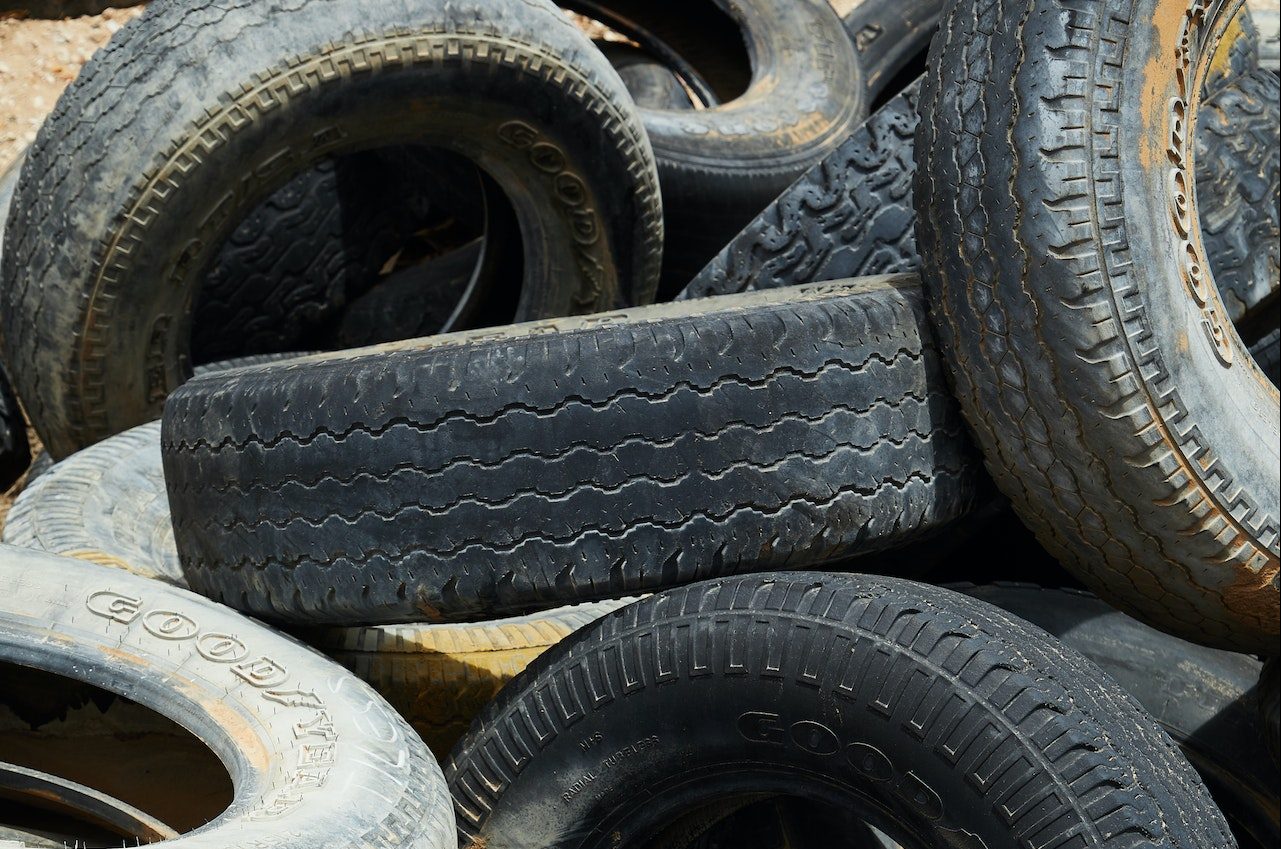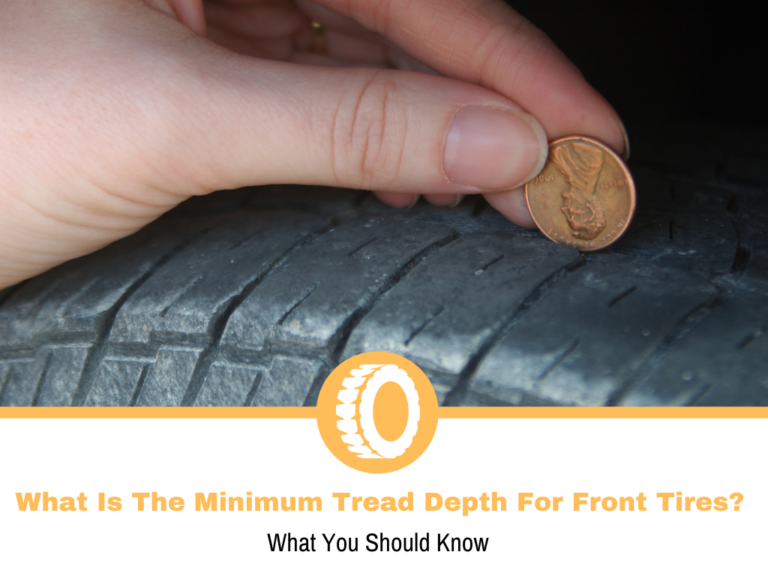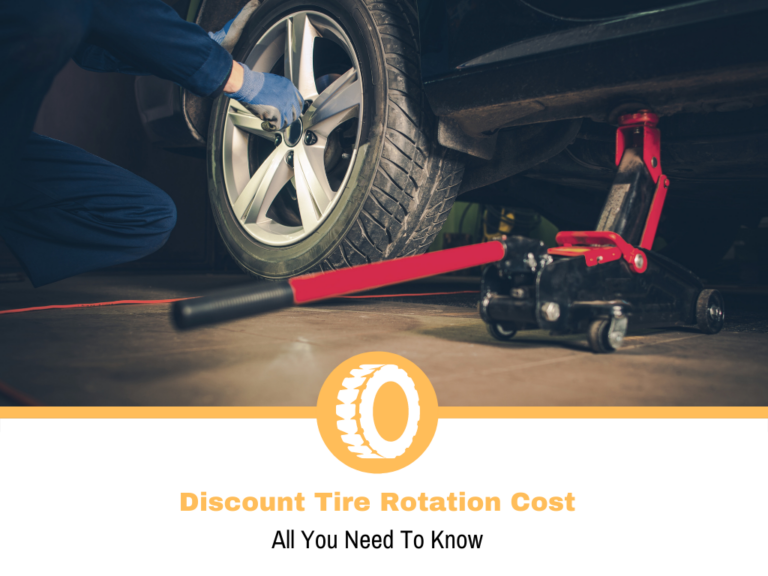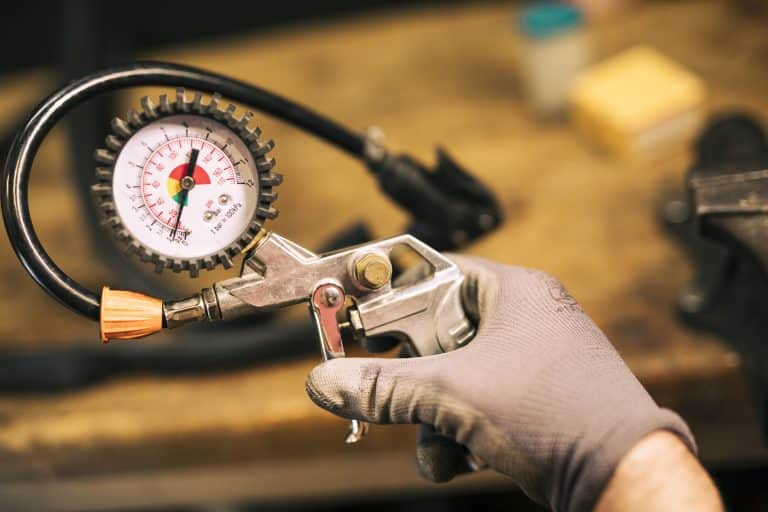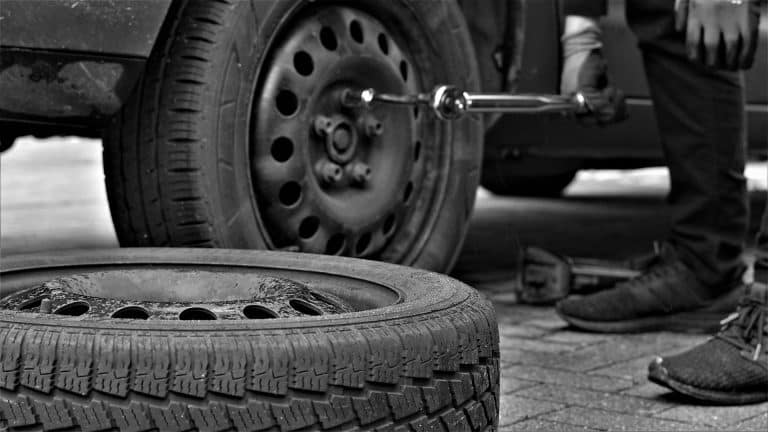How Long Can You Drive On Bald Tires?
The time period you can drive with bald tires depends on your aversion to putting your life and family at risk. Bald tires are nothing but a disaster waiting to happen, and it can happen just around the corner or on the highway when you are driving at 80 MPH.
The worst-case scenario is that your car will overturn and cause injury.
So, while there is no straight answer to how long you can drive on bald tires, our recommendation is that you do not drive the vehicle when the tires are all worn out. As you will get everything but good traction when driving the car with no tire treads and grooves.
Well, we know your question is not meant to hear what all can go wrong, but you want to know how long you can make do with the existing set of tires before they need to be changed.
Our motive is not to scare you by saying that you can run into an accident due to causes like hydroplaning, loss of control, etc. But we only want to warn you about the possible consequences and share the actual dangers of driving on bald tires.
What Are Bald Tires?
Bald tires are tires that have a minimum amount of or no tread left in them, which can help establish some grip and build traction with the road. Every tire loses its treads, grooves, sipes, shoulders, and sidewalls with time. While some parts are directly exposed to the road and wear down at a relatively higher speed than the other ones.
You will have bald tires when the tire grooves, sipes, and treads have worn down to an extent that all you can see is plain rubber without any pattern left. While this is the most extreme form of tire baldness, it does not happen overnight. The legal limit of a tire is 2/32” tread depth. The same tread depth is also required by Federal law. This depth can be measured with a tread depth gauge, a tool easily available at any auto store.
For best measurements, take the depth reading from three different grooves, and the tread with the lowest reading must be considered. Apart from this, you need to keep an eye on the tire condition and ensure that it does wear down to an extent when the tire belts become visible.
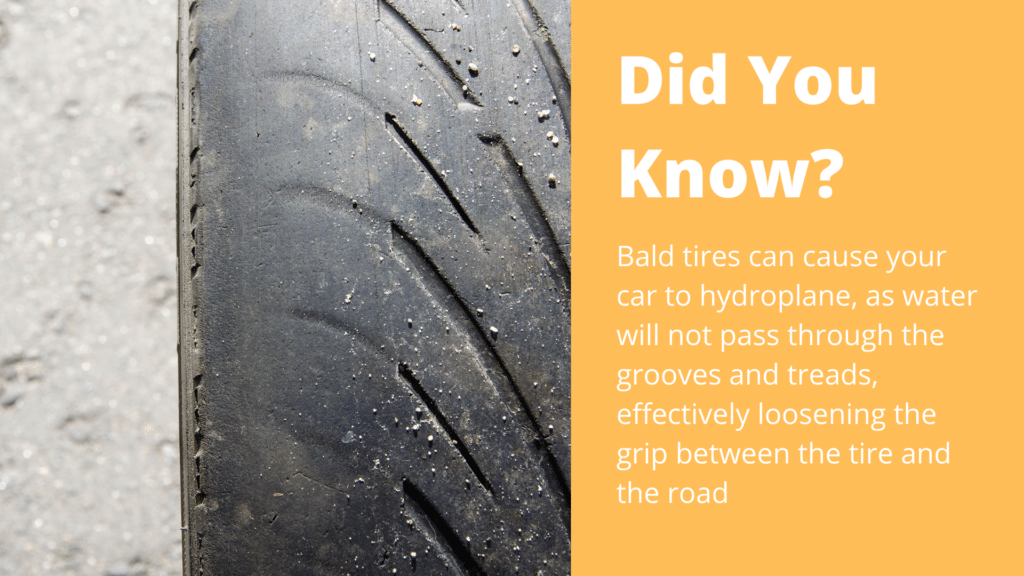
How to Check for Bald Tires?
All it takes is a simple inspection to tell whether or not your tires have gone bald. While taking note of the disappearing tire treads and sipes, there is another thing you can do to know the status, more importantly, a test.
This is the Penny Test. So, take a penny and insert in one of the tire’s tread, preferably in the middle one. While inserting the coin, you put Lincoln’s face in the downward position and keep a check on how much the coin hides behind the treads.
If the coin down to the extent that Lincoln’s face is partly covered, you are good to go. If the face is still showing, it is time to change the tires as your tires have gone partially bald, and the tread will completely vanish, depending on the usage.
So, if you are going to the office in your car every day, then chances are you need to start looking for new tires right away.
Why Is It Dangerous To Drive With Bald Tires?
Driving with bald tires is dangerous, period. The reason being you won’t get any traction with the road. So, even a simple brake can lead to skidding and losing control. That’s not all, driving at high speed with bald tires can also lead to more frequent puncture and, in worst cases, a blowout. As per the 2018 NHTSA Survey, 2% of the car crashes were the result of critical reasons, out of which tires were responsible for 35% of the crashes.
Have you ever seen a car drift or a tire burnout performed by a stuntman? The smoke that comes out from the car tire when it rotates at high speed while pushing down on the road is evidence of the tire’s rubber burning out.
That is exactly what happens when you drive the car on the road. While the process here is slow, it is there. As the rubber burns, the treads start to disappear, and eventually, the tires won’t have any grooves to let the water flow through smoothly.
If not for these grooves and treads, the air will not pass, failing to cool down the tires, and water will also not pass through, leading to skidding, punctures, loss of control, braking issues, etc.
What Can Happen If You Drive On Bald Tires?
Well, a lot can happen if you drive on bald tires. For one, hydroplaning is the most dreadful effect. Along with this, there will be excessive heat buildup that will further lead to rubber burning at an accelerated pace. Driving on bald tires will also make it difficult to drive on wet and snowy roads. Here are the effects of driving with bald tires.
- Hydroplaning: Tires have grooves and treads that are meant to channelize the airflow and pass the water. The water will not pass through and loosen the grip between the tire and the road in their absence.
- Snow Becomes your Archenemy: Snow tires have deeper treads to provide that extra grip while driving. If you would take a close look, the snow tires have more and better channeled sipes than the other ones, as sipes lend that extra traction. Slipping on a snowy road is more prominent if you drive not just with bald tires but with tires that have lost even 50% of the grooves.
- Air Pressure Loss: Bald tires will lose air faster than the ones which have proper treads. Accelerated air pressure loss means under-inflation, which becomes a major cause for skidding, making the vehicle harder to steer, even on dry roads. If that’s not all, tires with low air pressure will also skid when applying sudden brakes.
- Summer Heat Buildup: Rubber expands in summers, so it expands and breaks down more quickly. Now imagine your bald tires moving the road accumulating heat from the friction and from the summer heat. Excessive heat can also lead to unexpected blowouts causing major destruction to life and property.
These are four more reasons to convince you that driving with bald tires is never a good idea. Make sure you replace the worn-out tires before taking the vehicle out on the road again.
Can Bald Tires Explode?
Yes, bald tires can easily explode. Tire blowouts are common yet one of the most dangerous things, especially when you are driving on the road. Bald tires can explode due to various reasons. These include;
- Excessive heat buildup
- Skidding of tires stresses them and leads to blowout
- Water and snowy roads also cause more stress than the bald tires can handle, leading to explosions.
- Driving with bald tires on rough terrain can also lead to an explosion.
No matter what happens when you are driving with bald tires, a tire burnout or explosion is always the worst-case scenario, and it must be prevented.
Why Do Tires Go Bald In The Middle?
A lot of reasons can make the tires go bald in the middle, including excessive use, inconsistent driving patterns, unbearable summer heat, driving on rough roads, drifting, etc.
Also, misalignment, over & under-inflated tires, suspension issues impact the overall health of the tires. This increases the stress on the tires, ultimately making them go bald.
Frequently Asked Questions
How to prevent the tires from balding?
Tire rotation is one of the best ways to extend a tire’s life and ensure that it does not go bald. Rotation requires shifting the tire’s position with each other to ensure that every tire wears out evenly.
What is the right time to replace the tires?
Anytime before the tires go bald is right to change the tires. So, make sure that you conduct the tread depth test periodically and keep an eye on those grooves, sipes, and treads. Once they start fading out, consider changing the tires.
Why do bald tires cause braking issues?
Even though the brakes are applied to the inner tire rim, the tires are in constant touch with the road. Bald tires means there will be less traction and loose grip. Both these reasons lead to braking issues.
